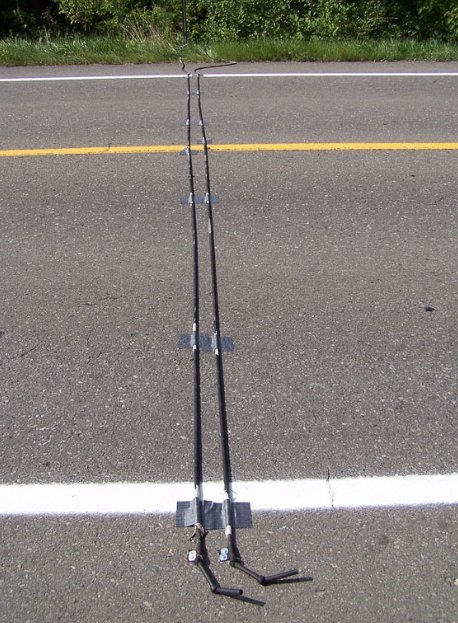As you drive through the busy roads and winding highways each day, you might notice something strange on the road: thin black tubes stretched across the pavement. They don’t seem like much, but there’s a lot more to them than meets the eye. These simple black cables play a huge role in how our roads are designed and how traffic is managed.
So, what exactly are these mysterious tubes? They’re called portable traffic counters, and transportation agencies use them to study traffic. You might think that doesn’t sound too exciting, but these cables help us figure out how many cars use certain roads and how busy streets get during the day.
With over 12,000 of these traffic counters placed across the state, they give vital information that helps cities plan better roads, decide where to put up new signs, and set speed limits.
How Do They Work?
The black tubes you see are part of a brilliant, yet surprisingly simple system. When a car drives over the tube, the pressure from the car’s tires pushes air through the tube, creating a small burst of air. This sends an electric signal to a counter device, which records every single car that passes by. By analyzing the bursts of air, experts can determine how many vehicles use a road and at what times the traffic gets heaviest.
But wait, it gets even more interesting. When two of these tubes are placed side by side, they can measure even more than just the number of cars. They can track how fast the vehicles are going, what kind of vehicles they are (like cars, trucks, or motorcycles), and in which direction they’re traveling.
This extra data helps transportation authorities understand the patterns of traffic better and make decisions about speed limits, lane changes, or even where to build new roads.
“These tubes are crucial in planning road safety,” says a spokesperson for the Department of Transportation. “Without them, we wouldn’t know how to allocate resources or improve our traffic systems.”
More Than Just Counting Cars
These black tubes are a lot more than simple traffic counters. They provide deep insights into how our roads work and how they can be improved. The U.S. Department of Transportation explains that every time a vehicle passes over one of these tubes, the burst of air closes a switch, which sends an electrical signal to a recording device. These devices can be installed either temporarily or permanently, depending on what kind of data needs to be collected.
Temporary installations usually stay on a road for just a day or two, giving a quick snapshot of traffic. However, permanent tubes stay in place for much longer and collect detailed, ongoing information. This helps cities monitor changes in traffic over time and adjust accordingly.

“These tubes help us gather data in a non-intrusive way,” an engineer from a local transportation agency explained. “We try to place them on straight sections of road where the data is most accurate.”
When placed on a straight stretch of road with low interference, single-tube installations count vehicles and measure the time between them. When two tubes are used together, they reveal much more: the speed, the number of axles, and the direction of the vehicles.
Solving Road Problems
The black tubes also help with local traffic issues. Let’s say there are complaints about speeding or drivers using neighborhoods as shortcuts. These tubes can be placed in problem areas to see if there’s really an issue. The data they collect helps city planners create solutions and decide on road budgets.
Next time you spot those black tubes on the road, remember that they’re working silently to keep track of how our streets function. They are essential tools for understanding the traffic flow and making decisions that shape the future of our roadways. When you drive over them, think of them as the invisible pulse of our constantly changing transportation system.
So, the next time you see those strange black cables, just know there’s a lot more going on behind the scenes than you might think. Share your thoughts in the comments below!


